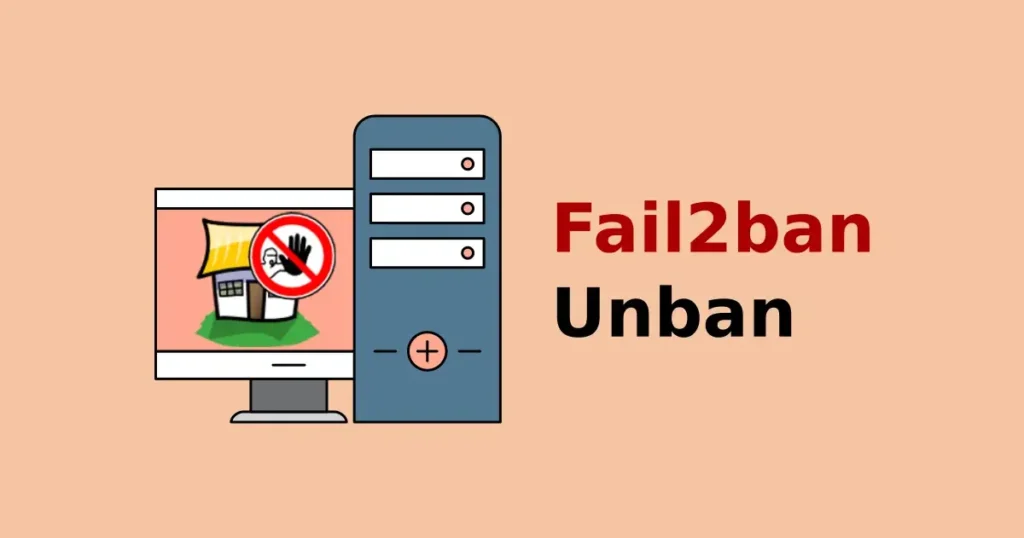How to Set Fail2Ban Settings?
Configuring Fail2Ban settings is a crucial step in enhancing your server’s security against automated attack attempts. This guide provides an overview of how to customize Fail2Ban to monitor specific services and implement blocking strategies tailored to your needs. Fail2Ban helps secure servers by automatically detecting and blocking malicious attempts based on log file analysis. The configuration process allows you to specify what Fail2Ban monitors and how it reacts to detected threats, enabling you to block unnecessary or dangerous traffic effectively.

Why Configure Fail2Ban Settings?
Although Fail2Ban works effectively with its default settings, every server has unique security needs. By monitoring specific services’ log files and defining attack patterns, you can customize Fail2Ban to meet your server’s specific requirements. This improves protection against attacks and reduces false positives. Fail2Ban’s ability to be tailored to each server’s unique environment makes it an indispensable tool for maintaining robust security protocols.
Fail2Ban’s customization isn’t just about increasing protection. It’s also about optimizing how your server resources are utilized. For instance, if your server is hosting multiple services, you can configure Fail2Ban to monitor only the most vulnerable ones, thereby reducing unnecessary processing and improving overall server performance. Tailoring Fail2Ban settings also helps in fine-tuning the balance between security and accessibility, ensuring that legitimate traffic is not mistakenly blocked.
How to Use It?
To configure Fail2Ban settings, follow these steps:
- Fail2Ban Configuration Files: Fail2Ban’s configuration files are located in the
/etc/fail2bandirectory. The main configuration file isjail.conf, but it’s recommended to use ajail.localfile for your customizations to preserve them during updates. This approach ensures that your settings remain intact even after software updates. Additionally, using ajail.localfile simplifies troubleshooting by keeping all your custom configurations in one place. - Jail Settings: You can configure a jail for each service you wish to protect. For instance, to enable and configure a jail for SSH, activate the
[sshd]section in yourjail.localfile and adjust the settings as necessary:[sshd] enabled = true port = ssh filter = sshd logpath = /var/log/auth.log maxretry = 3This configuration monitors the SSH service for malicious attempts and blocks IP addresses exceeding a specified number of failed login attempts within a certain timeframe. This setup helps protect against brute-force attacks, one of the most common threats to SSH services. - Filters and Actions: Fail2Ban requires filters to identify malicious behavior and actions to define what to do when such behavior is detected. The
/etc/fail2ban/filter.dand/etc/fail2ban/action.ddirectories contain predefined filters and actions for various services. Filters are regular expressions that search log files for patterns that indicate malicious activity. Once a pattern is detected, an action is triggered, which usually involves blocking the offending IP address. You can create new filters and actions tailored to your needs, allowing Fail2Ban to respond precisely to the types of threats your server faces.
What Are Its Components?
Fail2Ban consists of several key components:
- Jails: Define monitoring and blocking rules for a specific service. Each jail includes configurations for which log file to monitor, which filter to apply, and what action to take when a threat is detected.
- Filters: Regular expressions that search log files for malicious patterns. Filters are crucial as they determine what is considered a threat. Customizing filters allows you to expand or narrow the scope of Fail2Ban’s monitoring capabilities.
- Actions: Define the operations to be performed when an attack is detected, usually involving blocking the offending IP address. Actions can also include sending notifications, executing scripts, or logging the event for further analysis.
Why Is It Important?
Properly configuring Fail2Ban significantly enhances your server’s security. It effectively blocks malicious traffic, conserving system resources and preventing security breaches. By customizing Fail2Ban, you ensure that your server is protected against the specific types of threats it faces, rather than relying on generic settings that may not fully address your server’s vulnerabilities.
Moreover, the ability to adjust the sensitivity of Fail2Ban’s monitoring can reduce the likelihood of false positives, which can lead to legitimate users being blocked from accessing your server. This balance between security and accessibility is crucial for maintaining a reliable and secure server environment.
Conclusion
Fail2Ban is an essential component of your server security. The configuration process allows you to customize Fail2Ban to meet your server’s unique needs, providing more effective protection against malicious traffic. With Fail2Ban, you can maximize your security while conserving your server resources. For a detailed guide on how to set up Fail2Ban, you can refer to the article How to Set Fail2Ban Settings.
SEO Metadata
Alternative Text: “Fail2Ban tool settings configuration”
Title: “How to Set Fail2Ban Settings?”
Caption: “Fail2Ban tool settings configuration.”
Description: “This guide explains how to configure Fail2Ban settings to enhance server security. Learn step-by-step how to set up Fail2Ban and protect your server from malicious traffic.”




